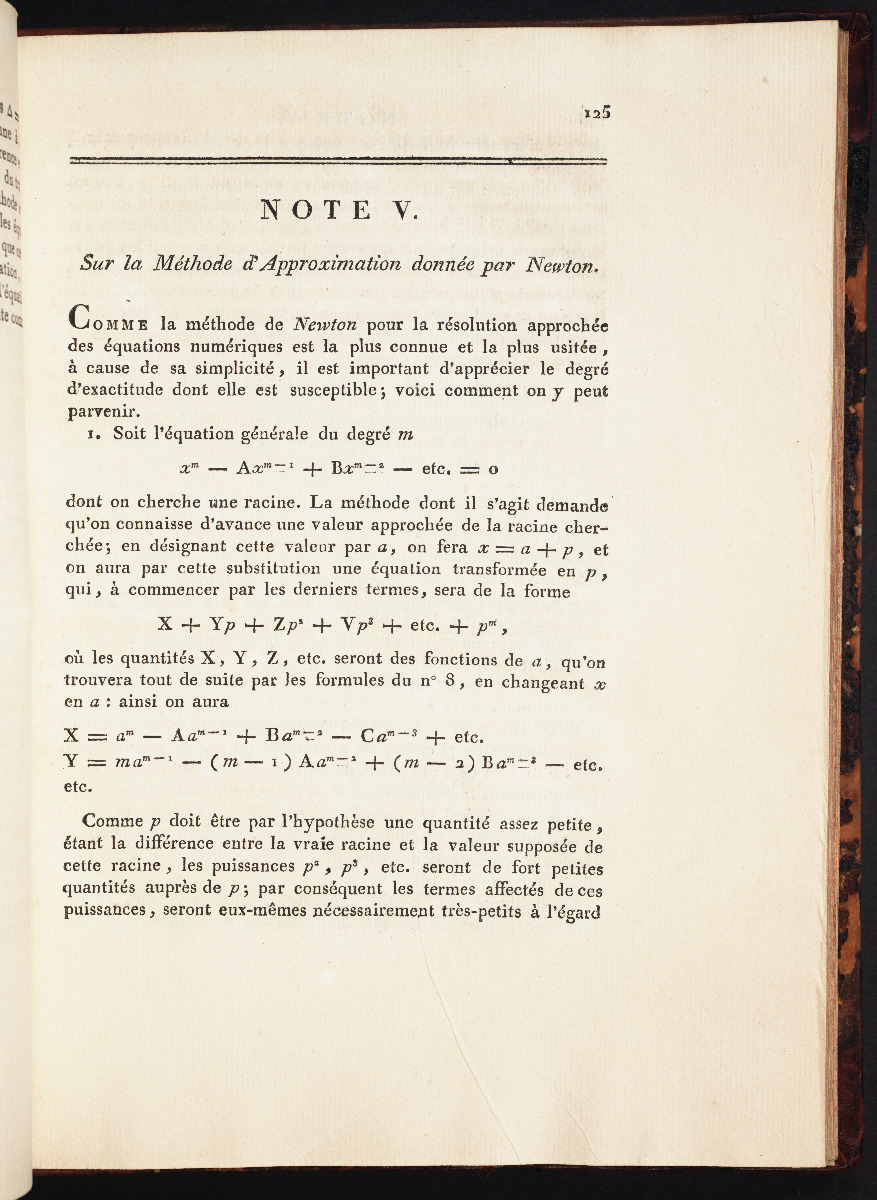- About MAA
- Membership
- MAA Publications
- Periodicals
- Blogs
- MAA Book Series
- MAA Press (an imprint of the AMS)
- MAA Notes
- MAA Reviews
- Mathematical Communication
- Information for Libraries
- Author Resources
- Advertise with MAA
- Meetings
- Competitions
- Programs
- Communities
- MAA Sections
- SIGMAA
- MAA Connect
- Students
- MAA Awards
- Awards Booklets
- Writing Awards
- Teaching Awards
- Service Awards
- Research Awards
- Lecture Awards
- Putnam Competition Individual and Team Winners
- D. E. Shaw Group AMC 8 Awards & Certificates
- Maryam Mirzakhani AMC 10 A Awards & Certificates
- Two Sigma AMC 10 B Awards & Certificates
- Jane Street AMC 12 A Awards & Certificates
- Akamai AMC 12 B Awards & Certificates
- High School Teachers
- News
You are here
Mathematical Treasure: Lagrange’s Traité de la Résolution des Equations Numérique
Joseph-Louis Lagrange (1736–1813) was born Giuseppe Lodovico Lagrangia in Turin, in what is now northern Italy. Lagrange contributed to several branches of mathematics, including the beginnings of abstract algebra. Below is an image of the title page from the 1808 edition of his Traité de la Résolution des Equations Numérique de tous les degrés.

Originally published in 1798, the 1808 “noevelle/new” edition contained revisions and more notes, making it the more widely used edition. The title can be translated as A Treatise on the solution of numerical equations of all degrees, indicating that the book deals with numerical solutions to equations. However, exact solutions to polynomial equations were also discussed, including a summary of Lagrange’s groundbreaking 1770 paper "Réflexions sur la résolution algébrique des équations" (published in the memoirs of the Berlin Academy of Sciences), which noted historian Israel Kleiner called one of the “four major sources in the evolution of group theory.” The first page of this summary is below.

The mathematical notation is interesting in this work. Below is a picture of page 2, which shows Lagrange representing general polynomial equations as a product of linear factors.

In the next picture, from Note 5 on Newton’s Method for approximating roots of polynomial equations, a general polynomial is shown in expanded form.

The pictures below are from Note 7 on the method of Alexis Fontaine for finding solutions of cubics, which shows notation for nonreal complex roots; Note 10 where the Greek capital sigma was used for summations; and from Note 12, depicting sequences of fractions starting with 1/0.



A complete digital scan of the 1808 edition of Lagrange’s Traité de la Résolution des Equations Numérique is available in the Linda Hall Library Digital Collections. The call number is QA218.L33 1808.
Janet Heine Barnett has created a project for students based on this primary source as part of the TRIUMPHS project.
Images in this article are courtesy of the Linda Hall Library of Science, Engineering & Technology and used with permission. The Linda Hall Library makes available all existing digital images from its collection that are in the public domain to be used for any purpose under the terms of a Creative Commons License CC by 4.0. The Library’s preferred credit line for all use is: “Courtesy of The Linda Hall Library of Science, Engineering & Technology.”
References
Kleiner, Israel. “The Evolution of Group Theory: A Brief Survey.” Mathematics Magazine 59, no. 4 (1986): 195-215. doi:10.2307/2690312.
Wussing, Hans. The Genesis of the Abstract Group Concept: A Contribution to the History of the Origin of Abstract Group Theory. Dover Publications, 2007.
Cynthia J. Huffman (Pittsburg State University), "Mathematical Treasure: Lagrange’s Traité de la Résolution des Equations Numérique," Convergence (September 2019)




